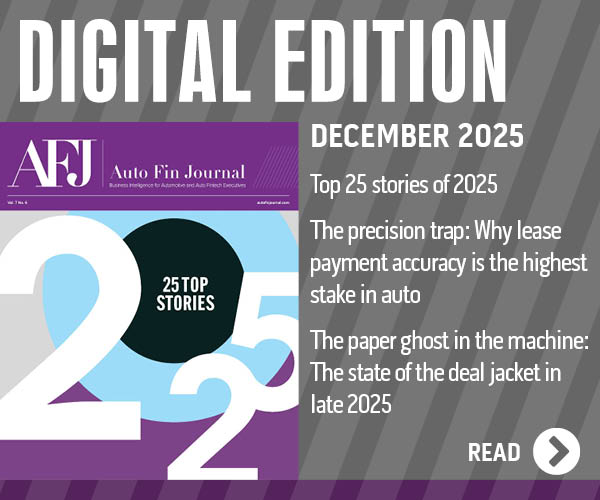Edmunds: Average negative equity above $6,700 among Q2 new-car deals

By subscribing, you agree to receive communications from Auto Remarketing and our partners in accordance with our Privacy Policy. We may share your information with select partners and sponsors who may contact you about their products and services. You may unsubscribe at any time.
Dealerships and their network of auto-finance providers are still contending with a huge wave of negative equity connected with consumers wanting a new vehicle.
According to new data from the second quarter generated by Edmunds, more than one in four new-vehicle trade-ins are underwater, a four-year high.
Analysts indicated 26.6% of trade-ins toward new-car purchases had negative equity, up from 26.1% in Q1 and 23.9% in Q2 of last year. This is the highest share Edmunds has on record since Q1 2021, when 31.9% of new-car trade-ins were upside down.
Edmunds reported the average amount owed on upside-down loans was $6,754, down slightly from $6,880 recorded in Q1 but up from $6,255 discovered a year ago.
Analysts also noticed a growing share of underwater car owners are dragging major debt into their next vehicle purchase, including:
—32.6% of underwater trade-ins had between $5,000 and $10,000 in negative equity, compared to 31.9% in Q1 and 30.2% in Q2 of last year
Subscribe to Auto Remarketing to stay informed and stay ahead.
By subscribing, you agree to receive communications from Auto Remarketing and our partners in accordance with our Privacy Policy. We may share your information with select partners and sponsors who may contact you about their products and services. You may unsubscribe at any time.
—23.4% owed more than $10,000, compared to 24.5% in Q1 and 20.7% in Q2 of last year
—7.7% owed more than $15,000, compared to 8.4% in Q1 and 6.8% in Q2 of last year
“Consumers being underwater on their car loans isn’t a new trend, but the stakes are higher than ever in today’s financial landscape,” Edmunds’ director of insights Ivan Drury said in a news release. “Affordability pressures, from elevated vehicle prices to higher interest rates, are compounding the negative effects of decisions like trading in too early or rolling debt into a new loan, even if those choices may have felt manageable in years past.
“And as buyers take on new loans with much higher interest rates than those from just a few years ago, even potential tax deductions can’t meaningfully offset the thousands more they’ll pay in interest. With a growing share of upside-down owners thousands of dollars in the red, many are at risk of getting stuck in a cycle of debt that only grows harder to break over time,” Drury went on to say.
To highlight the financial impact of rolling negative equity into a new vehicle purchase, Edmunds analysts compared the costs for consumers who financed a new vehicle involving a trade-in with negative equity in Q2 against the industry average for all financed new vehicles.
Analysts determined the average monthly payment for buyers who rolled negative equity into a new loan climbed to $915 in Q2 — the highest Edmunds has on record for this group and $159 more than the overall industry average of $756.
Edmunds added these individuals also financed $12,145 more than the typical new-vehicle buyer.
For car owners considering purchasing a new vehicle, Edmunds experts recommended that they review their loan payoff amount and compare it to their vehicle’s current trade-in value to understand if they’re underwater — a crucial first step in making more informed purchasing and financial decisions.
“If you’re thinking about replacing your vehicle but still have an outstanding loan, it’s important to understand where you stand financially before making your next move,” said Joseph Yoon, Edmunds’ consumer insights analyst. “In many cases, holding onto your current car and staying current on payments and maintenance may be the wisest choice. But if a new vehicle is the right decision for you, doing your research is key.
“Choosing the right car for your needs and budget can save you more in the long run than any incentive the dealer or manufacturer may be offering. In today’s market, smart shopping is your strongest defense,” Yoon added.
Edmunds Q2 Negative Equity Data
| Year | Share of New Vehicles Purchased with a Trade-in |
Share of Trade-ins with Negative Equity |
Average Amount of Negative Equity |
Average Trade-in Age (Years) |
| 2025 | 45.7% | 26.6% | -$6,754 | 3.8 |
| 2024 | 44.8% | 23.9% | -$6,255 | 3.7 |
| 2023 | 46.2% | 17.3% | -$5,543 | 3.4 |
| 2022 | 46.8% | 14.7% | -$4,487 | 3.2 |
| 2021 | 50.8% | 23.1% | -$4,246 | 3.6 |
| 2020 | 45.6% | 37.2% | -$5,845 | 3.9 |
| 2019 | 44.6% | 34.6% | -$5,317 | 3.8 |
Source: Edmunds


